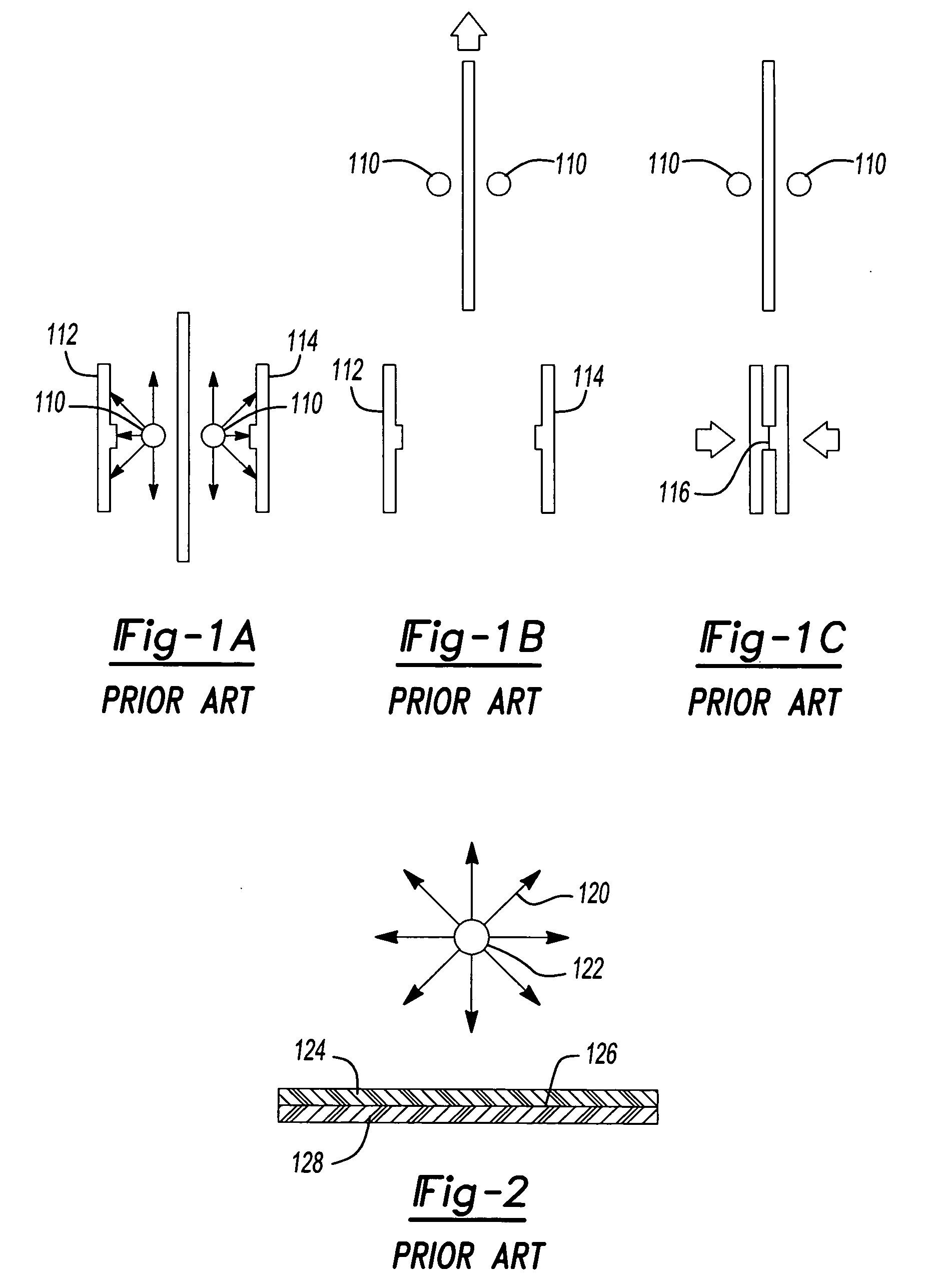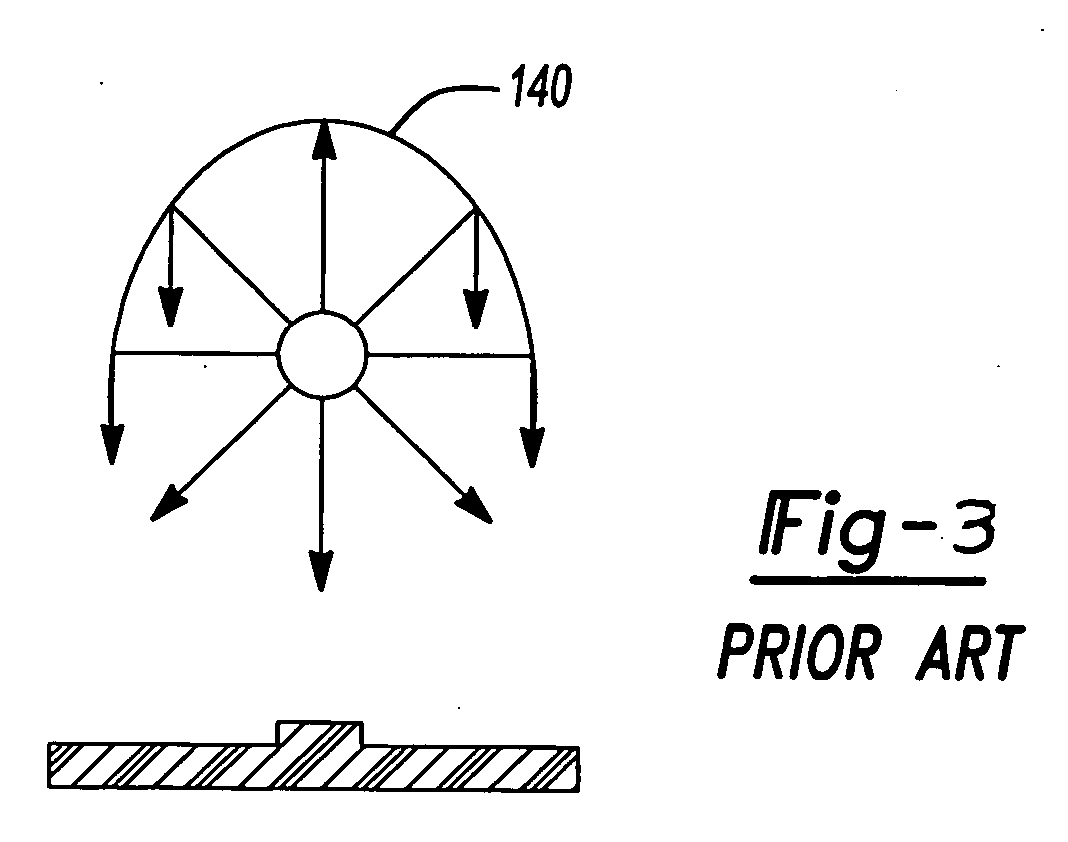Waveguide for plastics welding using an incoherent infrared light source
a waveguide and infrared light technology, applied in the field of plastics welding, can solve the problems of increased production costs, high heat produced by conventional laser systems, reflectors that have failed to reliably and efficiently direct infrared energy to the specific weld area, etc., and achieve the effect of reducing infrared energy
- Summary
- Abstract
- Description
- Claims
- Application Information
AI Technical Summary
Benefits of technology
Problems solved by technology
Method used
Image
Examples
Embodiment Construction
[0041] The following description of the preferred embodiments is merely exemplary in nature and is in no way intended to limit the invention, its application, or uses.
[0042] Referring now to FIG. 4, an apparatus and a method for welding a first plastic part 10 to a second plastic part 12 using a first incoherent infrared light source 14 and a second incoherent infrared light source 16 is provided according to the principles of the present teachings. Specifically, first incoherent infrared light source 14 and second incoherent infrared light source 16 are each mounted to and carried by a support structure 18. First incoherent infrared light source 14 is disposed within a first negative waveguide assembly 20. First negative waveguide assembly 20 comprises a reflector portion 22 and a negative waveguide portion 24. In some embodiments, negative waveguide portion 24 is formed integrally with reflector portion 22 to form a single, unitary assembly. In some embodiments, first incoherent ...
PUM
| Property | Measurement | Unit |
|---|---|---|
| Angle | aaaaa | aaaaa |
| Width | aaaaa | aaaaa |
| Energy | aaaaa | aaaaa |
Abstract
Description
Claims
Application Information
 Login to View More
Login to View More - R&D
- Intellectual Property
- Life Sciences
- Materials
- Tech Scout
- Unparalleled Data Quality
- Higher Quality Content
- 60% Fewer Hallucinations
Browse by: Latest US Patents, China's latest patents, Technical Efficacy Thesaurus, Application Domain, Technology Topic, Popular Technical Reports.
© 2025 PatSnap. All rights reserved.Legal|Privacy policy|Modern Slavery Act Transparency Statement|Sitemap|About US| Contact US: help@patsnap.com



